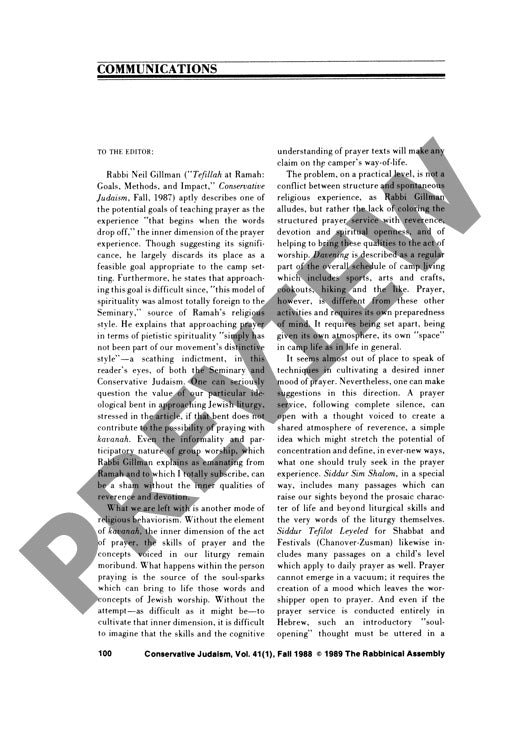Communications
Couldn't load pickup availability
This communication responds to Rabbi Neil Gillman's analysis of prayer instruction at Camp Ramah, challenging his dismissal of spiritual experience as an achievable goal in camp settings. The author argues that Gillman's emphasis on liturgical skills and cognitive understanding, while neglecting the inner dimension of prayer (kavanah), represents a fundamental flaw in Conservative Judaism's approach to worship. Through critical analysis of contemporary prayer pedagogy, this study contends that effective prayer instruction requires more than participatory worship and Hebrew literacy; it demands cultivation of reverence, devotion, and spiritual openness. The methodology involves examining practical techniques for creating sacred space within structured camp environments, including the use of preparatory silence, introductory thoughts in vernacular language, and contemplative melodies drawn from Hasidic tradition. Key findings suggest that without intentional cultivation of inner spiritual qualities, prayer instruction becomes mere "religious behaviorism," failing to animate liturgical words and concepts. The analysis demonstrates that the havurah movement's integration of Hasidic musical traditions offers viable models for authentic prayer experience. The study concludes that addressing the spiritual dimension of prayer should be prioritized rather than dismissed as impractical, arguing for its central importance to meaningful Jewish worship education.

More Information
-
Physical Description
-
Publication Information
Published 1988
ISBN
-
Publication Credits

